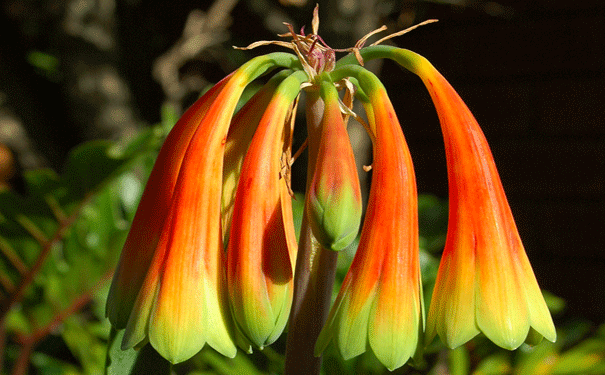
A rare blooming Soldier Lily flower (Cyrtanthus obliquus). Image: Anke van Wyk/Shutterstock
Wordsworth was right about these flowers.
When Wordsworth was lying on his couch ‘in vacant or in pensive mood‘, all he had to do was think of daffodils and his heart would fill with pleasure. And while this image may also cheer others suffering from depression, scientists from the University of Copenhagen, Denmark, have shown that these flowers could provide an effective drug for treating depression as well.
South African plant species Crinum and Cyrtanthus, which are related to snowdrops and daffodils, have already been shown to contain substances that have an effect on the mechanisms involved in depression and other brain disorders. But a research team has now revealed that some of these compounds have characteristics that could enable them to negotiate the blood-brain barrier.
This is one of the biggest challenges when it comes to treating brain diseases — 90 per cent of new drugs either fail to cross this barrier, as the blood vessels are impenetrable for most compounds, or are removed by the active transporter proteins.
You could say that the proteins pump the drugs out of the cells just as quickly as they are pumped in,” says Associate Professor Birger Brodin, author of the study published in the Journal of Pharmacy and Pharmacology. “So it is of great interest to find compounds that manage to trick this line of defence.”
Brodin and his colleagues examined various compounds from the plants to determine how they influenced the transporter proteins, using a genetically modified cell model of the blood-brain barrier containing high levels of the transporter P-glycoprotein. Several of the plant compounds they studied could probably be smuggled past the proteins, Brodin says.
“Our results are promising, and several of the chemical compounds studied should therefore be tested further, as candidates for long-term drug development.”
However, it may take a while for these compounds to reach our pharmacies. “This is the first stage of a lengthy process, so it will take some time before we can determine which of the plant compounds can be used in further drug development.”
Source: The University of Copenhagen






